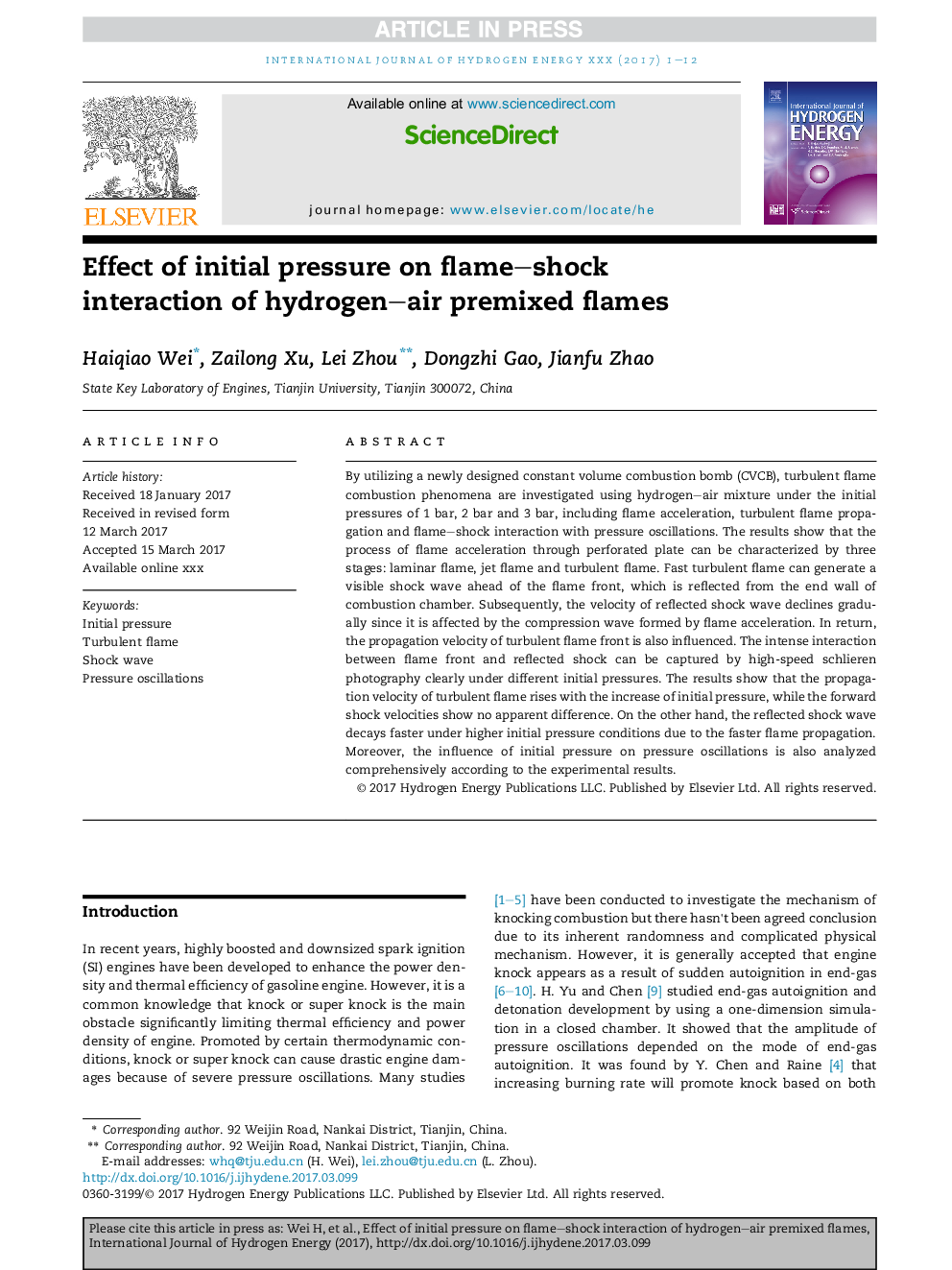| Article ID | Journal | Published Year | Pages | File Type |
|---|---|---|---|---|
| 5147789 | International Journal of Hydrogen Energy | 2017 | 12 Pages |
Abstract
By utilizing a newly designed constant volume combustion bomb (CVCB), turbulent flame combustion phenomena are investigated using hydrogen-air mixture under the initial pressures of 1Â bar, 2Â bar and 3Â bar, including flame acceleration, turbulent flame propagation and flame-shock interaction with pressure oscillations. The results show that the process of flame acceleration through perforated plate can be characterized by three stages: laminar flame, jet flame and turbulent flame. Fast turbulent flame can generate a visible shock wave ahead of the flame front, which is reflected from the end wall of combustion chamber. Subsequently, the velocity of reflected shock wave declines gradually since it is affected by the compression wave formed by flame acceleration. In return, the propagation velocity of turbulent flame front is also influenced. The intense interaction between flame front and reflected shock can be captured by high-speed schlieren photography clearly under different initial pressures. The results show that the propagation velocity of turbulent flame rises with the increase of initial pressure, while the forward shock velocities show no apparent difference. On the other hand, the reflected shock wave decays faster under higher initial pressure conditions due to the faster flame propagation. Moreover, the influence of initial pressure on pressure oscillations is also analyzed comprehensively according to the experimental results.
Related Topics
Physical Sciences and Engineering
Chemistry
Electrochemistry
Authors
Haiqiao Wei, Zailong Xu, Lei Zhou, Dongzhi Gao, Jianfu Zhao,
